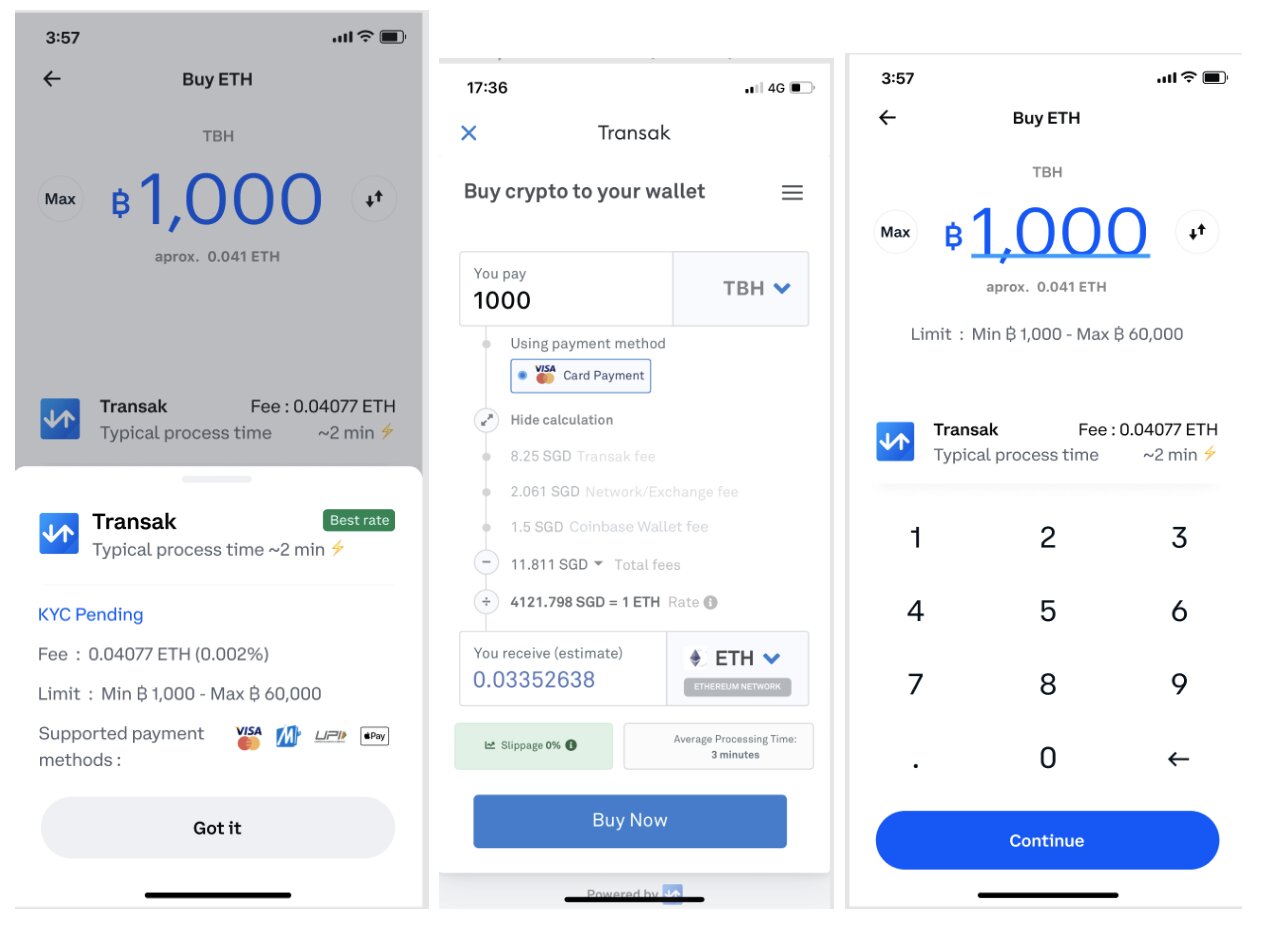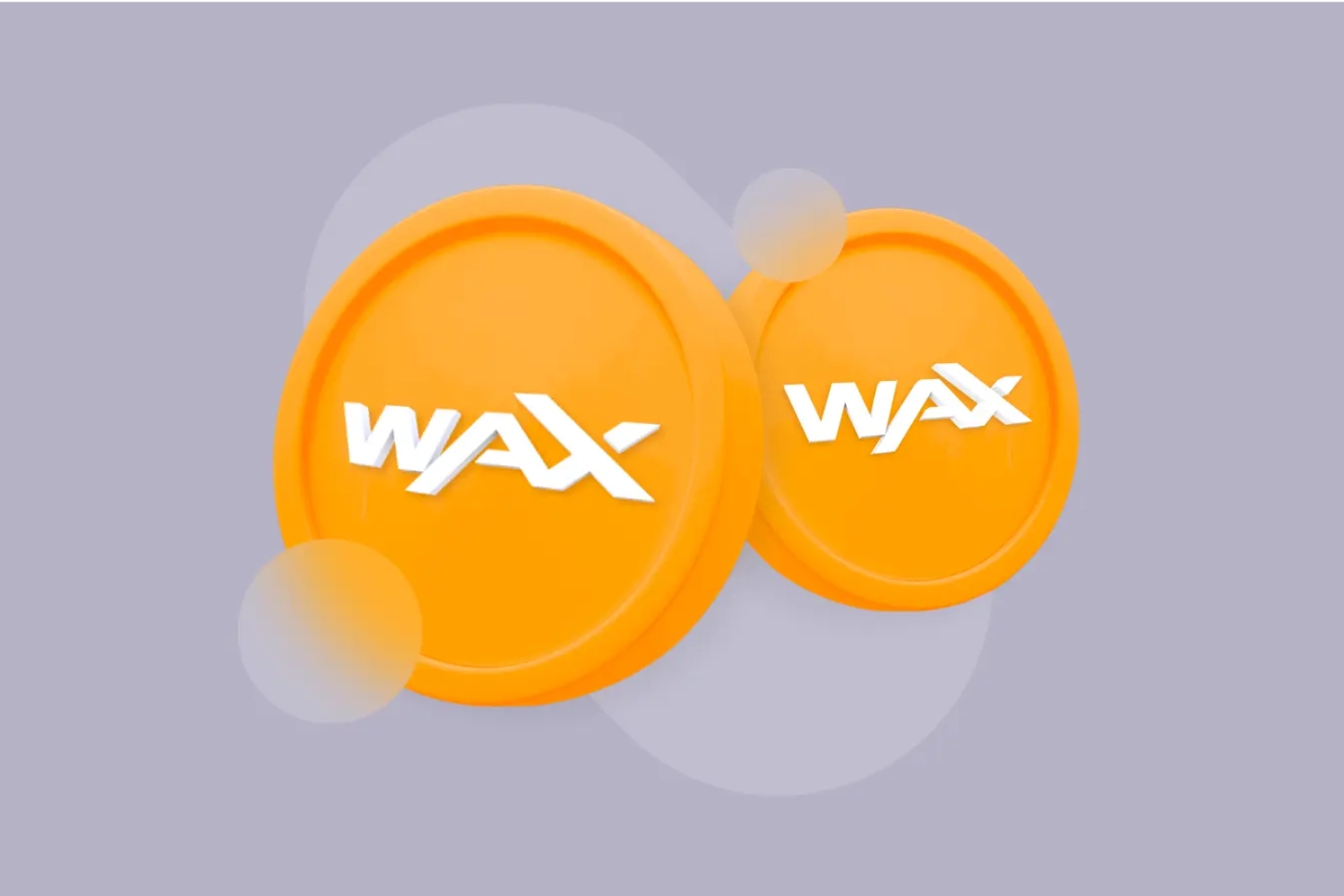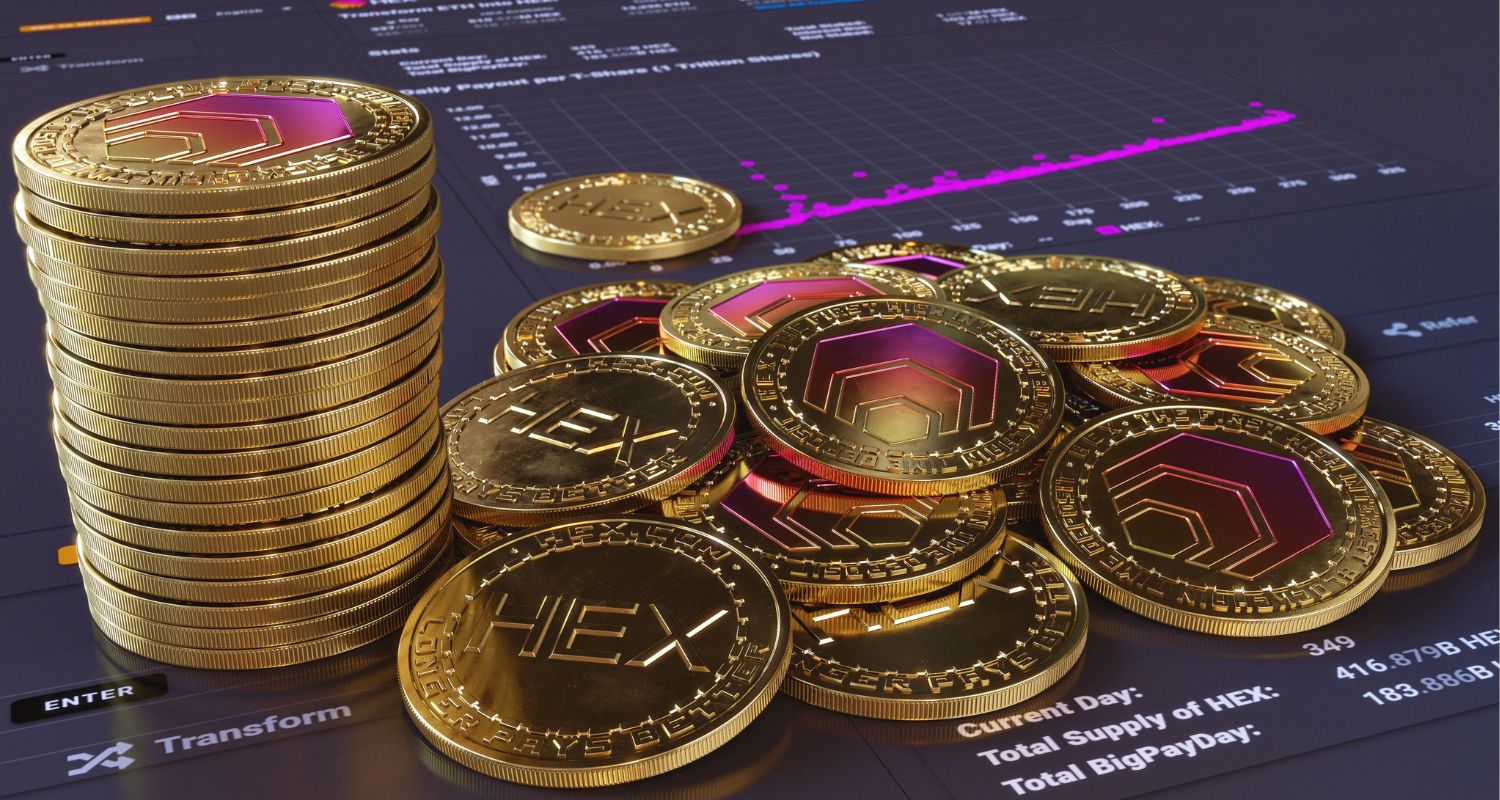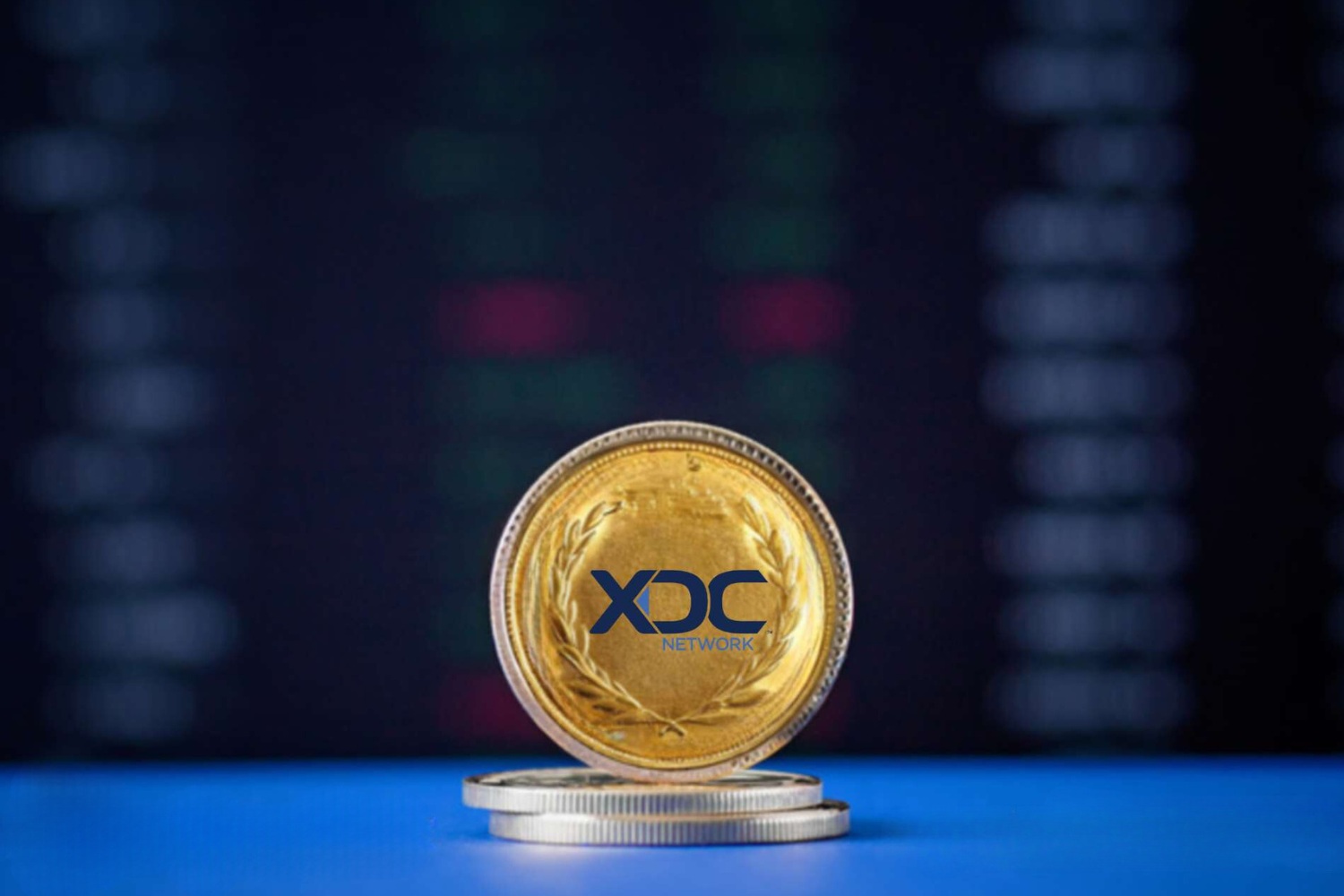Introduction
Welcome to the exciting world of cryptocurrency! If you’re interested in buying crypto but not sure where to start, you’ve come to the right place. In this article, we’ll guide you through the process of purchasing your first digital assets, step by step.
Cryptocurrency, such as Bitcoin, Ethereum, and Litecoin, is a digital form of currency that operates using decentralized technology known as blockchain. Unlike traditional fiat currencies, cryptocurrencies are not regulated by any central authority, providing individuals with greater financial autonomy and privacy.
Before diving into the process of buying crypto, it’s essential to understand the basics. Familiarize yourself with how cryptocurrencies work, the concept of wallets, and the different types of crypto exchanges available. By gaining a solid grasp of this knowledge, you can make informed decisions throughout the buying process.
One of the first steps in buying crypto is selecting a wallet. A wallet provides you with a secure place to store your digital assets. There are various types of wallets, including software wallets, hardware wallets, and online wallets. Each has its pros and cons, so choose one that aligns with your security preferences and convenience.
Once you have a wallet, the next step is choosing a crypto exchange. Crypto exchanges are platforms where you can buy, sell, and trade cryptocurrencies. It’s crucial to select a reputable and reliable exchange that meets your specific requirements. Consider factors such as fees, supported cryptocurrencies, user interface, security features, customer support, and regulatory compliance when making your decision.
After selecting a suitable exchange, creating an account is the next step. This typically involves providing your personal information, such as your name, email address, and sometimes even a form of identification. Ensuring the security and privacy of your personal data is essential when setting up your account, so opt for exchanges with robust security measures in place.
Verifying your identity is often a requirement when using crypto exchanges. This step helps prevent fraud, money laundering, and other illegal activities. The specific verification process can vary among exchanges, but typically involves submitting identification documents and completing a verification procedure.
To further enhance the security of your crypto purchases, setting up two-factor authentication (2FA) is highly recommended. 2FA adds an extra layer of protection by requiring a second verification method, such as a unique code or fingerprint scan, in addition to your password, when accessing your account.
Now that your account is set up and secured, it’s time to fund it. Crypto exchanges offer various payment methods, including bank transfers, credit/debit cards, and sometimes even alternative payment options like PayPal. Choose the method that suits you best in terms of convenience, speed, and cost.
With your account funded, you’re ready to make your first crypto purchase. The process may vary slightly depending on the exchange, but it typically involves selecting the cryptocurrency you want to buy, entering the desired amount, and confirming the transaction. Keep in mind that prices can fluctuate rapidly in the crypto market, so it’s important to consider market conditions before finalizing your purchase.
After completing your purchase, it’s crucial to store your crypto safely. Transferring your digital assets to your wallet is typically the best practice to minimize the risk of theft or loss. Ensure that you securely back up your wallet’s private keys and take necessary precautions to protect your crypto from potential security breaches.
Remember, while the world of cryptocurrency is exciting, it’s also important to be mindful of potential risks and take necessary security measures. Stay updated with the latest security practices and keep learning about best practices for storing and managing your digital assets.
By following this guide and conducting thorough research, you can confidently embark on your journey to buying and owning cryptocurrency. Let’s dive in!
Understanding Cryptocurrency
Cryptocurrency has revolutionized the way we perceive and interact with money. To successfully navigate the world of buying crypto, it’s essential to have a solid understanding of the basics.
At its core, cryptocurrency is digital or virtual currency that utilizes cryptography for secure financial transactions and control the creation of new units. Unlike traditional fiat currencies that are regulated by central banks, cryptocurrencies operate on decentralized technology known as blockchain.
The blockchain is a distributed ledger maintained by a network of computers called nodes. Transactions made with cryptocurrencies are recorded and verified on the blockchain, ensuring transparency and security.
Bitcoin, created by an unidentified person or group of individuals using the pseudonym Satoshi Nakamoto, was the first cryptocurrency introduced in 2008. It quickly gained popularity, and since then, thousands of cryptocurrencies have been created, each with its unique features and use cases.
One of the key characteristics of cryptocurrencies is their decentralized nature. This means that no single entity or organization controls or regulates them. Instead, transactions are verified by network participants through a process called mining or proof-of-stake, depending on the consensus mechanism employed by a specific cryptocurrency.
Another significant aspect of cryptocurrencies is their limited supply. Many cryptocurrencies have a maximum supply cap, ensuring that they cannot be arbitrarily inflated. Bitcoin, for instance, has a maximum supply of 21 million coins, making it a scarce and valuable asset.
Cryptocurrencies provide several advantages over traditional financial systems. First and foremost, they offer greater financial autonomy and privacy. Cryptocurrency transactions do not require you to provide personal information, like in traditional banking systems, and you have control over your funds without relying on intermediaries.
Additionally, cryptocurrency transactions are typically faster and come with lower fees compared to traditional banking systems that involve intermediaries and cross-border transactions. This makes cryptocurrencies an attractive option for individuals involved in international remittances or those seeking faster and more cost-effective transactions.
It’s important to note that the value of cryptocurrencies can be highly volatile. Fluctuations in the market can result in significant price changes over short periods. While this volatility offers potential profit opportunities, it’s crucial to approach cryptocurrency investments with caution and conduct thorough research before making any financial decisions.
Understanding the basic concepts of cryptocurrency, such as decentralized technology, limited supply, and the advantages it offers, will equip you with the knowledge needed to navigate the crypto landscape more effectively. By keeping up with the latest industry trends and developments, you can make informed decisions when buying and investing in cryptocurrencies.
Now that you have a solid grasp of cryptocurrency fundamentals let’s move on to the next steps in buying your first crypto!
Choosing a Wallet
When venturing into the world of cryptocurrency, one of the first steps to buying crypto is choosing a wallet. A wallet is essential for securely storing and managing your digital assets.
There are various types of wallets available, each offering different levels of security and convenience. Here are some common types you can choose from:
- Software Wallets: These are applications that you install on your computer or smartphone. Software wallets can be further categorized into desktop wallets and mobile wallets. Desktop wallets are installed on your computer, while mobile wallets are installed on your smartphone. These wallets offer easy accessibility, but it is crucial to keep your device secure from potential threats, such as malware or hacking attempts.
- Hardware Wallets: Hardware wallets are physical devices designed specifically for storing cryptocurrencies. They provide an extra layer of security by keeping your private keys offline, away from potential online threats. Hardware wallets often require users to physically confirm transactions, adding another level of protection. While hardware wallets offer excellent security, they come at a cost and may not be as convenient for frequent transactions.
- Online Wallets: Also known as web wallets or cloud-based wallets, online wallets store your private keys on a server maintained by a third party. They are accessible from any device with an internet connection. Online wallets are convenient and suitable for individuals who frequently access their funds but come with the risk of potentially being vulnerable to online attacks. It is crucial to choose reputable online wallet providers with robust security measures in place.
- Paper Wallets: A paper wallet is a physical printout or written record of your public and private keys. It offers a high level of security because it is not susceptible to online threats. However, paper wallets require careful handling and storage since they can be easily damaged or lost.
- Hardware Wallets: Hardware wallets are physical devices designed specifically for storing cryptocurrencies. They provide an extra layer of security by keeping your private keys offline, away from potential online threats. Hardware wallets often require users to physically confirm transactions, adding another level of protection. While hardware wallets offer excellent security, they come at a cost and may not be as convenient for frequent transactions.
When selecting a wallet, consider factors such as security, ease of use, compatibility with the cryptocurrencies you plan to purchase, and your own preferences for accessibility and convenience.
To ensure the security of your wallet, it’s important to follow best practices such as:
- Being cautious of phishing attempts and only accessing your wallet through official channels.
- Using strong, unique passwords and enabling two-factor authentication (2FA) where available.
- Backing up your wallet’s recovery phrase or private keys and storing them in a safe location.
- Regularly updating your wallet software to ensure you have the latest security patches.
By choosing a wallet that aligns with your security needs and preferences, you can confidently store and manage your crypto assets. Remember, security should always be a top priority when it comes to cryptocurrency.
Now that you have selected a wallet, it’s time to move on to the next step: selecting a crypto exchange where you can buy your desired cryptocurrencies.
Selecting a Crypto Exchange
Once you have your cryptocurrency wallet set up, the next step in buying crypto is selecting a crypto exchange. A crypto exchange is an online platform that allows you to buy, sell, and trade cryptocurrencies.
When choosing a crypto exchange, it’s important to consider several factors to ensure a seamless and secure trading experience. Here are some key things to keep in mind:
Reputation and Reliability: Look for exchanges with a solid reputation and a track record of reliable service. Research online reviews, user experiences, and the overall reputation of the exchange within the crypto community. It’s essential to choose an exchange that is trustworthy, transparent, and has a history of secure transactions.
Security Measures: The security practices and protocols implemented by the exchange are of utmost importance. Check if the exchange offers two-factor authentication (2FA) for added account security. Look into their cold storage practices, which involve storing most of their user funds offline in secure wallets. Additionally, find out if the exchange has any insurance coverage to protect against potential losses.
Supported Cryptocurrencies: Ensure that the exchange supports the specific cryptocurrencies you intend to buy. Different exchanges offer varying ranges of supported cryptocurrencies. If you have specific tokens in mind, make sure they are listed on the exchange before proceeding.
User Interface: Consider the user interface and overall user experience offered by the exchange. A clean and intuitive interface can make the process of buying and trading crypto more efficient and enjoyable. Look for an exchange that provides easy access to important features, clear transaction history, and simple navigation.
Fees and Costs: Exchanges usually charge fees for transactions, deposits, and withdrawals. Compare the fee structures of different exchanges to ensure that they are reasonable and align with your budget. Keep in mind that while lower fees may be preferable, it’s essential to consider other factors such as security and reliability.
Regulatory Compliance: Check if the exchange operates within the legal framework of your jurisdiction. Compliance with applicable regulations ensures that the exchange follows industry best practices and offers an added layer of protection for users.
Liquidity: Liquidity refers to the ability to buy or sell an asset quickly and at a fair price. Exchanges with higher liquidity tend to have a larger volume of buyers and sellers, making it easier to execute trades without significant price slippage. Higher liquidity also allows for greater flexibility when entering or exiting positions.
Customer Support: Inquire about the availability and quality of customer support provided by the exchange. Look for exchanges that offer multiple channels of customer support, such as live chat, email, or phone, and have a reputation for prompt and helpful responses.
By considering these factors, you can narrow down your options and select a crypto exchange that best fits your needs. Remember that different exchanges may excel in different areas, so prioritize the factors that are most important to you.
Once you have chosen a crypto exchange, the next step is creating an account. In the next section, we will guide you through the process of creating an account and verifying your identity.
Creating an Account
With a crypto exchange selected, it’s time to create an account. Creating an account on the exchange is usually a straightforward process, but it is essential to pay attention to certain details for a smooth experience.
Here are the steps involved in creating an account on most crypto exchanges:
Step 1: Visit the Exchange Website: Go to the official website of the crypto exchange you have chosen. Make sure you are on the correct website to avoid phishing attempts or scams.
Step 2: Sign Up: Look for the “Sign Up” or “Create Account” button on the exchange’s homepage and click on it. You will be directed to the account creation page.
Step 3: Provide Personal Information: Fill in the required personal information, such as your name, email address, and sometimes a username. Some exchanges may also ask for your phone number for added security.
Step 4: Set Up a Strong Password: Create a strong, unique password for your account. It is crucial to choose a password that includes a combination of letters, numbers, and special characters, and avoid using easily guessable information.
Step 5: Read and Accept the Terms and Conditions: Take the time to carefully read the terms and conditions, privacy policy, and any other relevant legal agreements provided by the exchange. Make sure you understand and agree to the terms before proceeding.
Step 6: Complete the Captcha: To verify that you are a human and not a bot, most exchanges require you to complete a captcha. Follow the instructions provided to complete this step.
Step 7: Submit the Form: Once you have filled out all the required information, click on the “Submit” or “Create Account” button to submit your account registration form.
Step 8: Verify Your Email: Some exchanges may require you to verify your email address by clicking on a verification link sent to the email you provided during registration. Check your inbox and follow the instructions provided in the email.
Step 9: Set Up Two-Factor Authentication (2FA): After creating your account, it is highly recommended to enable two-factor authentication (2FA) for added security. 2FA adds an extra layer of protection by requiring an additional verification step, such as a unique code generated by an authenticator app on your phone.
Step 10: Complete Additional Verification (if required): Depending on the exchange and the regulations it follows, you may be required to complete additional verification steps to further secure your account and comply with know-your-customer (KYC) regulations. This typically involves submitting identification documents, such as a passport or driver’s license, and sometimes proof of address.
It’s crucial to ensure the security and privacy of your personal information during the account creation process. Choose exchanges that implement strong security measures, such as encryption and secure socket layer (SSL) protocols, to protect your data from unauthorized access.
Remember to keep your account credentials, including your username, password, and any additional verification codes, safe and secure. Avoid sharing this information with anyone and consider using a password manager to securely store and manage your login credentials.
Once you have completed the account creation process and any necessary verifications, you’re ready to move on to funding your account and buying your desired cryptocurrencies.
Verifying Your Identity
When using a crypto exchange, it is common for them to require users to go through a verification process to comply with regulations and ensure a secure trading environment. Verifying your identity on a crypto exchange adds an extra layer of protection against fraud, money laundering, and other illicit activities.
The specific identity verification process can vary depending on the exchange and the regulations they adhere to. However, here are some common steps you may encounter:
Step 1: Submitting Identification Documents: You will be asked to provide identification documents to verify your identity. Typically, a government-issued ID such as a passport, driver’s license, or national identification card is required. Make sure the document is valid and not expired.
Step 2: Providing Personal Information: You may be required to provide additional personal information, such as your full name, date of birth, address, and sometimes a photograph of yourself. This information helps confirm your identity and ensure compliance with regulatory requirements.
Step 3: Document Verification: The exchange will review the documents you submitted for verification. This process may involve manual review by their compliance team or automated systems that verify the authenticity of the documents.
Step 4: Waiting for Approval: After submitting your identification documents, you will usually need to wait for the exchange to review and approve your verification request. The processing time can vary depending on the exchange’s workload and the accuracy of the information you provided.
Step 5: Additional Verification (if required): Depending on the exchange’s policies and the level of verification required, you may be asked to provide additional supporting documents. These may include proof of address, such as a utility bill or bank statement, or any other document that proves your residency.
Note: It is essential to read and follow the instructions provided by the exchange during the identity verification process. Failure to provide accurate and valid information can result in delays or rejection of your verification request.
During the verification process, exchanges are committed to safeguarding your personal information. Reputable exchanges implement strong security measures, such as encryption and secure data storage, to protect your details from unauthorized access.
Additionally, it is recommended to exercise caution when dealing with any exchange that requests sensitive information beyond what is necessary for identity verification. Be wary of potential phishing attempts and ensure that you are providing information only through official and secure channels.
Completing the identity verification process is a crucial step in establishing trust and compliance on the crypto exchange. Once your identity has been verified, you gain access to higher transaction limits, enhanced account security features, and a more seamless trading experience.
Now that your identity is verified, you can proceed to the next steps of setting up additional security measures, funding your account, and buying your desired cryptocurrencies.
Setting Up Two-Factor Authentication
In the world of cryptocurrency, security is of paramount importance. One effective way to enhance the security of your crypto exchange account is by setting up two-factor authentication (2FA). 2FA adds an extra layer of protection by requiring a second verification step in addition to your password when accessing your account.
The most commonly used form of 2FA is the Time-Based One-Time Password (TOTP) method, which involves generating a unique passcode on a trusted device or application. Here’s how you can set up 2FA on most crypto exchanges:
Step 1: Download an Authenticator App: Start by downloading an authenticator app on your smartphone or tablet. Some popular authenticator apps include Google Authenticator, Authy, and Microsoft Authenticator. These apps are typically available for free on your device’s app store.
Step 2: Enable 2FA on the Exchange: Log in to your crypto exchange account and navigate to the security or account settings. Look for the option to enable 2FA and choose the TOTP method.
Step 3: Scan the QR Code: Open the authenticator app on your device and select the option to add a new account or manually enter a key. Use your device’s camera to scan the QR code displayed on the exchange’s website. If scanning the QR code is not possible, you can manually enter the provided key.
Step 4: Save the Backup Key: The exchange will generate a backup key in case you lose your device or need to set up 2FA on a new device. Save this backup key in a secure location, such as a password manager or a physical offline storage.
Step 5: Enter the Verification Code: The authenticator app will now show a verification code specific to your exchange account. Enter this code into the appropriate field on the exchange’s website to complete the 2FA setup.
Step 6: Test the 2FA: To ensure that 2FA is working correctly, log out of your account and then log back in. After entering your password, the exchange will prompt you to enter the verification code displayed in the authenticator app on your device.
Once you have set up 2FA, every time you log in to your account, you will be required to enter both your password and the unique verification code generated by the authenticator app on your device. This extra layer of security significantly reduces the risk of unauthorized access, even if your password is compromised.
It’s crucial to keep your authenticator app and device secure. Here are some best practices to follow:
- Backup Your Authenticator App: Many authenticator apps provide the option to back up your account information. Make use of this feature to ensure you can easily restore your accounts if you switch to a new device.
- Secure and Update Your Device: Keep your device’s operating system, apps, and security software up to date to minimize vulnerabilities. Use a strong, unique passcode or biometric authentication to lock your device.
- Store Backup Keys Securely: Safely store the backup keys for your 2FA-enabled accounts. Consider using a password manager or offline storage like a secure USB drive or a physical notebook kept in a secure location.
- Be Cautious of Phishing Attempts: Exercise caution and be vigilant about phishing attempts, particularly those trying to trick you into providing your 2FA code or personal information.
By setting up 2FA, you significantly enhance the security of your crypto exchange account and protect your digital assets from unauthorized access. Now that you have 2FA enabled, let’s move on to the next step of funding your account and buying your first cryptocurrencies.
Funding Your Account
Now that you have set up your crypto exchange account and implemented important security measures like two-factor authentication, the next step is to fund your account. Funding your account allows you to have the necessary funds to buy cryptocurrencies.
The specific methods available for funding your account can vary depending on the exchange. However, here are some common ways to fund your crypto exchange account:
- Bank Transfers: Many crypto exchanges allow you to fund your account through bank transfers. With this method, you initiate a transfer from your bank account to the exchange’s designated bank account. It’s important to note that bank transfers may take some time to process, and there may be fees associated with these transactions.
- Credit/Debit Cards: Some exchanges accept credit or debit card payments. This method allows for quicker transactions, but it’s important to be aware of any fees charged by the exchange for using this funding option.
- Alternative Payment Methods: Depending on the exchange, you may have the option to fund your account using alternative payment methods such as PayPal, Skrill, or other digital payment platforms. These methods can provide faster transaction times, but it’s important to check for any associated fees.
When funding your account, it’s crucial to consider the fees charged by the exchange for different funding methods. Some exchanges may charge higher fees for certain payment methods, so it’s important to choose the option that aligns with your budget and preferences.
Here are a few additional factors to consider when funding your account:
- Minimum Deposit Amount: Check if the exchange has a minimum deposit requirement. Ensure that you meet this requirement before proceeding with your funding.
- Confirmation Time: Depending on the funding method you choose, there may be a delay in the confirmation and availability of funds in your account. Take this into account if you are planning to buy cryptocurrencies at a specific time.
- Transaction Limits: Familiarize yourself with the transaction limits imposed by the exchange. Make sure the funding method you choose aligns with your desired transaction amounts.
- Security Measures: Ensure that the exchange has robust security measures in place to protect your payment information during the funding process. Look for exchanges that use encryption protocols and other security features.
It’s important to double-check the funding details, including the recipient’s account information, before initiating a transaction. Any mistakes in the account details could result in the funds being sent to the wrong account.
Once the funds are successfully deposited into your exchange account, you’re ready to move on to the exciting part – buying your first cryptocurrencies.
Now that your account is funded let’s continue to the next section where we will guide you through the process of buying crypto using different payment methods.
Buying Crypto Using Different Payment Methods
When it comes to buying cryptocurrencies, crypto exchanges offer various payment methods to accommodate the diverse needs of their users. Here are some common payment methods you can use to purchase crypto:
- Bank Transfers: Many exchanges allow you to buy cryptocurrencies using bank transfers. With this method, you transfer funds from your bank account to the exchange’s designated bank account. Bank transfers usually take a few business days to complete, but they often come with lower fees compared to other payment methods.
- Credit/Debit Cards: Some exchanges support credit or debit card payments. This method offers quick and convenient transactions, allowing you to buy cryptocurrencies instantly. However, keep in mind that certain exchanges may charge higher fees for purchases made using credit or debit cards.
- Alternative Payment Methods: Depending on the exchange, there may be alternative payment options available. These can include digital payment platforms like PayPal, Skrill, or other payment processors. Alternative payment methods often offer faster transaction times, but it’s important to check for any associated fees charged by the exchange.
- Peer-to-Peer (P2P) Trading: In P2P trading, you can directly buy cryptocurrencies from other individuals using various payment methods agreed upon by both parties. P2P trading platforms connect buyers and sellers and facilitate the transaction process. This method offers more flexibility in terms of payment options, and you may be able to negotiate better rates with sellers.
When buying crypto using different payment methods, consider the following:
- Fees: Take note of the fees associated with each payment method. Compare the fees charged by the exchange for different payment options and choose the one that suits your budget and preferences.
- Limits: Check the transaction limits imposed by the exchange for each payment method. Ensure that the limits align with your desired transaction amounts.
- Processing Time: Different payment methods have varying processing times. Bank transfers can take a few business days, while credit or debit card transactions are usually instant. Consider the processing time if you need to make a time-sensitive purchase.
It’s important to remember that cryptocurrency prices can be volatile, so it’s wise to monitor the market before making a purchase. Consider factors such as the current price, market trends, and any news or events that may impact the cryptocurrency’s value.
Once you have selected the payment method and completed the necessary steps according to the exchange’s instructions, you will typically see the purchased cryptocurrency credited to your exchange account. From there, you can decide to hold the crypto in your exchange wallet or transfer it to a personal wallet for added security.
Now that you know the different payment methods available, let’s move on to the next section, where we will guide you through the process of making your first crypto purchase.
Making Your First Crypto Purchase
Now that you have your crypto exchange account set up, funded, and understand the different payment methods available, it’s time to make your first cryptocurrency purchase. Here are the general steps to follow:
Step 1: Choose Your Desired Cryptocurrency: Determine which cryptocurrency you want to buy. Research different cryptocurrencies and their potential uses and long-term prospects. Consider factors such as market trends, historical performance, and any news or developments that may impact the crypto’s value.
Step 2: Select the Trading Pair: If the exchange supports multiple trading pairs, choose the one that matches the cryptocurrency you want to buy with the one you are using to fund the purchase. For example, if you want to buy Bitcoin (BTC) using US dollars (USD), you would select the BTC/USD trading pair.
Step 3: Decide on the Purchase Amount: Determine how much of the cryptocurrency you want to buy. It’s important to consider your budget, the current market price, and any applicable fees associated with the transaction.
Step 4: Place a Buy Order: On the exchange platform, you will find an option to place a buy order. Enter the details of your purchase, including the amount and specific price if you are opting for a limit order. Review the details to ensure accuracy before confirming the order.
Step 5: Monitor the Order: After placing the buy order, keep an eye on the market to monitor the progress of your purchase. If you placed a market order, the transaction should be executed almost instantly. For limit orders, your purchase will be completed when the price reaches the specified level.
Step 6: Confirm the Purchase: Once the order is filled, check your exchange account balance to verify that you have successfully purchased the desired amount of cryptocurrency.
Step 7: Secure Your Assets: After completing the purchase, it’s important to ensure the safety of your newly acquired cryptocurrency. If you plan to hold the crypto in your exchange account, take advantage of the platform’s security features, such as two-factor authentication and withdrawal limits. Alternatively, consider transferring the cryptocurrency to a personal wallet for added security.
It’s important to note that cryptocurrency prices can be volatile, and market conditions can change rapidly. Prices may fluctuate between the time you place an order and when it gets executed. Take this into account and be prepared for potential price variations.
Remember to keep track of your transactions and maintain accurate records for tax purposes if applicable in your jurisdiction. It’s wise to consult with a tax professional to understand your obligations and any reporting requirements related to cryptocurrency investments.
Now that you have made your first crypto purchase, congratulations! You are now a cryptocurrency owner. As you continue to build your portfolio, always conduct thorough research, stay informed with market conditions, and carefully consider your investment decisions.
In the next section, we will discuss the importance of securely storing your cryptocurrencies and provide guidance on how to store them safely.
Storing Your Crypto Safely
After purchasing cryptocurrencies, it is crucial to ensure the secure storage of your digital assets. Here are some important steps to consider when it comes to storing your crypto safely:
1. Choose a Secure Wallet: Select a secure wallet to store your cryptocurrencies. Consider using a hardware wallet, which is a physical device specifically designed to keep your private keys offline. Hardware wallets offer an added layer of security by providing protection against potential online threats.
2. Use a Software Wallet: If you prefer a software wallet, ensure it is from a trusted source and use one that offers robust security features, such as encryption and multi-factor authentication.
3. Set Up a Strong Password/PIN: Regardless of the type of wallet you choose, create a strong password or PIN for accessing your wallet. Use a unique combination of alphanumeric characters, symbols, and upper- and lower-case letters.
4. Backup Your Wallet: Regularly back up your wallet’s private keys or seed phrase and store them securely. Consider using offline or encrypted storage options such as hardware wallets or encrypted USB drives. This backup will enable you to recover your funds if your wallet is lost, damaged, or compromised.
5. Enable Two-Factor Authentication (2FA): Add an extra layer of security by enabling two-factor authentication on your wallet or exchange accounts. This additional verification step provides an added level of protection against unauthorized access to your funds.
6. Be Cautious of Phishing Attempts: Be vigilant of phishing attempts, especially when interacting with wallet providers or exchanges. Avoid clicking on suspicious links and only access your wallets or exchanges using official websites or applications.
7. Use Cold Storage for Long-Term Storage: Consider cold storage options, such as keeping your private keys offline on a paper wallet or using a hardware wallet disconnected from the internet. Cold storage provides increased security by reducing exposure to online threats.
8. Stay Informed About Security Practices: Keep up to date with the latest security practices and news in the cryptocurrency space. Stay informed about potential vulnerabilities, recent hacks, and best practices for securing your digital assets.
9. Test Your Backup and Recovery Process: Periodically test your backup and recovery process to ensure that your wallet can be restored successfully. This step is essential to verify that your backup is accurate and to confirm that you can access your funds if needed.
By following these steps and practicing good security hygiene, you can greatly enhance the safety of your cryptocurrencies. Remember, the responsibility of protecting your assets falls on you, so stay proactive and diligent in keeping your crypto secure.
In the next section, we will discuss general security precautions to consider when dealing with cryptocurrencies.
Taking Security Precautions
When dealing with cryptocurrencies, it is essential to take specific security precautions to protect your digital assets and ensure a safe and secure experience. Here are some important security measures to consider:
1. Stay Updated: Keep your software, wallets, and devices up to date with the latest security patches and updates. Regularly check for firmware or software updates provided by wallet manufacturers and follow their recommended upgrade procedures.
2. Be Mindful of Public Wi-Fi: Avoid accessing your cryptocurrency wallets or making transactions while connected to public Wi-Fi networks. Public Wi-Fi can be more susceptible to hacking or eavesdropping, making your transactions and funds vulnerable.
3. Use Strong Passwords: Create strong, unique passwords for your cryptocurrency wallets and exchange accounts. Use a combination of letters, numbers, symbols, and upper- and lower-case characters. Avoid using easily guessable information and never reuse passwords across multiple platforms.
4. Be Cautious of Social Engineering: Be aware of social engineering attempts, such as phishing scams or fraudulent emails, that attempt to trick you into disclosing your private keys or sensitive information. Always double-check the authenticity of communication, especially when it involves financial transactions or requests for personal information.
5. Implement Multi-Factor Authentication (MFA): Enable multi-factor authentication (MFA) whenever possible for your cryptocurrency wallets and exchange accounts. MFA adds an extra layer of security by requiring an additional verification step, such as a unique code sent to your mobile device or generated by an authenticator app.
6. Use Secure Networks: Connect to secure and trusted networks when accessing your cryptocurrency wallets or making transactions. Use a virtual private network (VPN) for an added layer of security, especially when accessing your wallets remotely.
7. Be Wary of Suspicious Links: Avoid clicking on suspicious links, whether received via email, social media, or other communication channels. Cybercriminals often use deceptive links to phish for sensitive information or gain unauthorized access to your accounts.
8. Implement Hardware Wallets: Consider using hardware wallets to store your cryptocurrencies securely. Hardware wallets store your private keys offline, providing an additional layer of protection against online threats. These wallets can protect your assets even if your computer or smartphone is compromised.
9. Use Cold Storage for Long-Term Holdings: For long-term holdings, consider cold storage options such as offline paper wallets or hardware wallets stored in a secure location. Cold storage minimizes the risk of online attacks and provides an extra layer of protection for your cryptocurrencies.
10. Be Mindful of Sharing Information: Be cautious when discussing your cryptocurrency holdings or transactions publicly. Sharing too much information can make you a potential target for malicious actors. Exercise discretion and avoid revealing sensitive details that could compromise your security.
By implementing these security precautions, you can significantly reduce the risk of unauthorized access to your cryptocurrencies and protect your digital assets. Remember, maintaining the security of your cryptocurrencies is an ongoing effort, so stay vigilant and follow best practices to ensure the safety of your funds.
In the next section, we will conclude our guide and recap the key steps you’ve learned to buy and store your cryptocurrencies safely.
Conclusion
Congratulations! You’ve reached the end of our guide on buying and storing cryptocurrencies safely. By following the steps outlined in this guide, you are well-equipped to navigate the exciting world of cryptocurrencies with confidence.
Throughout the process, we covered the essential steps, from understanding cryptocurrency basics to selecting a wallet, choosing a crypto exchange, and making your first crypto purchase. We emphasized the importance of security measures such as two-factor authentication, strong passwords, and secure storage options like hardware wallets or cold storage.
Remember to stay informed about the latest security practices, trends, and potential risks in the cryptocurrency industry. Keep an eye on market conditions and perform thorough research before making any financial decisions.
As you continue your journey in the world of cryptocurrencies, always prioritize security. Be cautious of scams or phishing attempts, use secure networks, and keep your devices, wallets, and software up to date. Regularly back up your wallets and test your backup and recovery process to ensure that you can access your funds if needed.
It’s essential to remain informed about regulatory requirements in your jurisdiction to ensure compliance and a responsible approach to cryptocurrency investments.
Please remember that investing in cryptocurrencies carries inherent risks, including price volatility and potential loss of funds. As with any investment, do thorough research and only invest what you can afford to lose.
We hope that this guide has provided you with valuable insights and empowered you to safely enter the world of cryptocurrencies. Embrace this exciting technology, continue to educate yourself, and always prioritize security in your crypto journey.
Good luck on your cryptocurrency endeavors!

























